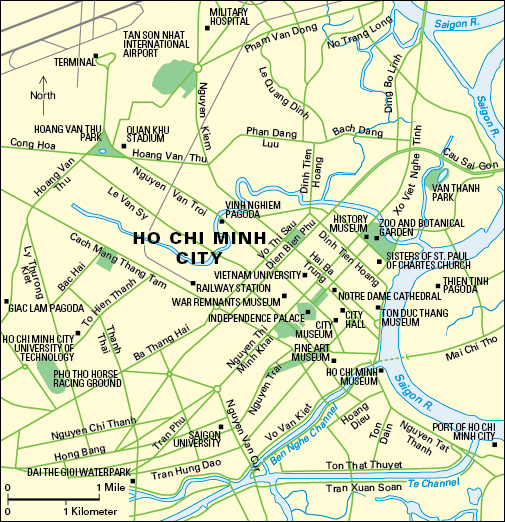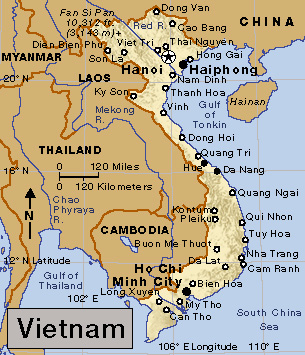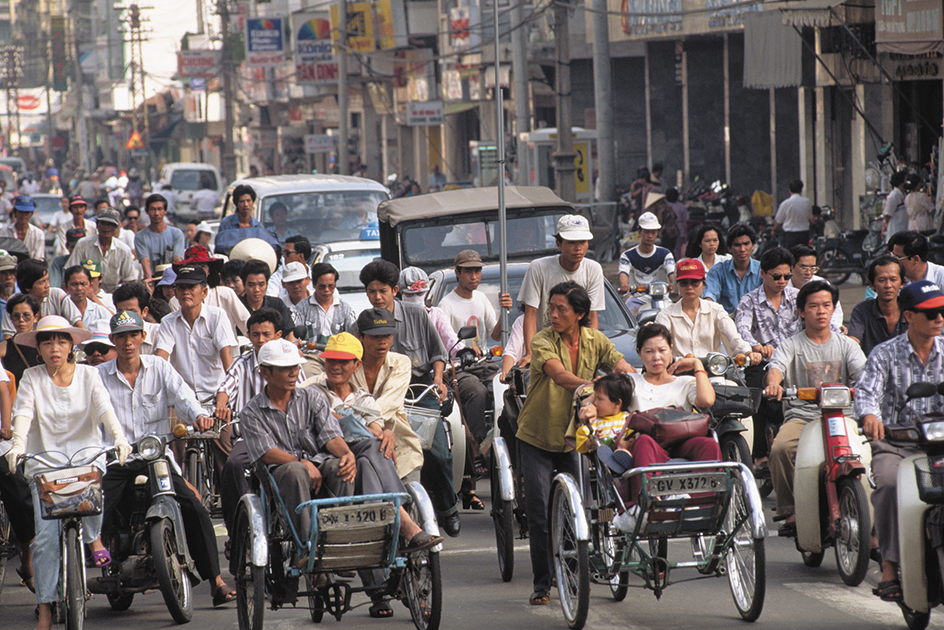Ho Chi Minh << hoh chee mihn >> City (pop. 7,125,493) is Vietnam’s largest city and most important economic center. Ho Chi Minh City lies on the Saigon River in southern Vietnam about 45 miles (70 kilometers) from the South China Sea. Ho Chi Minh City was known as Saigon until 1975, and many of the city’s residents still refer to it by that name.


Ho Chi Minh City has many treelined streets and wide boulevards. The city’s architecture includes old Chinese structures, French colonial buildings, and modern high-rise offices and apartments. Landmarks include the Roman Catholic Notre Dame Cathedral; the Buddhist Giac Lam Pagoda, which was built in 1744 and is the oldest of the city’s numerous pagodas; and the History Museum, which houses artifacts from Vietnam’s history. Vietnam National University–Ho Chi Minh City is one of the largest institutions of higher learning in Vietnam.

Ho Chi Minh City’s major industrial products include chemicals, clothing, consumer electronics, leather goods, and processed foods and beverages. Because of its closeness to the South China Sea, Ho Chi Minh City has developed into an important port. Tan Son Nhat International Airport serves the city.
In the 1600’s, Vietnamese migrating southward arrived at a village they eventually called Saigon, which was inhabited by Khmer people from Cambodia. Chinese merchants established the neighboring community of Cholon in the late 1700’s. The French seized Saigon in 1859. As French influence spread in Southeast Asia, Saigon grew from a rough river town into the largest center of business and commerce in French Indochina. It also served as the seat of colonial administration for southern Vietnam, which the French called Cochin China. Through the years, the city earned a reputation for being more cosmopolitan and business-oriented than the capital, Hanoi.
In 1954, the French agreed to withdraw from Vietnam, and the country was split in two. Saigon became the capital of the Republic of Vietnam in the southern part of the country. An economic boom based largely on American military spending made the city an island of prosperity and safety in the 1960’s during the Vietnam War. The war ended with the entry of Communist forces into Saigon on April 30, 1975. The Communist government in Hanoi soon renamed Saigon, Cholon, and their suburbs together as Ho Chi Minh City, in honor of the Vietnamese Communist leader Ho Chi Minh.
Following economic reforms in the 1980’s, Ho Chi Minh City grew rapidly. This rapid growth led to a number of problems, including overcrowding; shortages of housing, water, and electric power; and an increase in air and water pollution.

